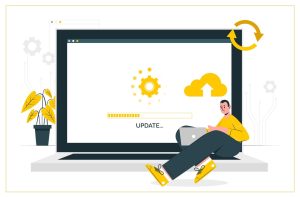How Patent Drawings Services Help Patent Applicants Meet Hyper-Technical Requirements

In the past, patent drawings were mostly found in design patent applications. Over the last two decades, illustrations have become essential elements of all types of patent applications – both design and utility. If inventors want patent examiners to quickly understand their inventions and increase the likelihood of their patents being granted, they must provide the best possible patent drawings in their applications.
There are very few situations where it’s feasible for a patentable invention to be properly explained in writing alone. That’s why regulatory agencies such as the USPTO (U.S. Patent & Trademark Office), the World Intellectual Property Organization (WIPO), or the European Patent Office (EPO) don’t force applicants to provide illustrations/drawings when filing applications.
But, the likelihood that an examiner will understand an invention with illustrations and drawings is much higher. So, producing and submitting drawings appropriate for utility/design patent applications is the safest option for applicants who seek quick and hassle-free approval processes. However, creating suitable illustrations/drawings isn’t easy for patent applicants. They have to address several hyper-technical requirements.
Understanding Patent Illustrations
A patent drawing or illustration covers numerous items. For most people, a patent illustration is a drawing of the item that’s set to be patented. But, technical diagrams, flowcharts, sectional/cross-sectional views of the item, etc., – these items qualify as illustrations in the eyes of patent examiners.
Be it a basic two-dimensional visual depiction of the invention that you aspire to patent or a complicated blueprint displaying complex crystalline chemical structures – both are deemed as illustrations by patent examiners. As long as your “illustrations” (technical diagrams, flowcharts, etc.) explain your innovation, you can use any type of drawing.
However, the rules for patent drawings and illustrations are quite hard to follow. That’s why not including any drawings is the choice that many patent applicants make. By doing so, they severely decrease their chances of getting approval from patent regulatory agencies.
Hyper-Technical Requirements for Creating Acceptable Patent Illustrations
Ideally, no patent applicant should be thinking of creating flawless patent drawings or illustrations, as long as it demonstrates what they’ve invented. But, that isn’t the case for modern-day patent applicants. They have to meet several hyper-technical requirements such as –
- Almost all patent offices across the world prefer the illustrations to be presented in A4 size papers (8 ¼ by 11 ¾ inches).
- Margin requirements are equally specific (USPTO requirements are typically applied in most patent offices across the world. The top and left sides have to be 2.5 cm (minimum), while the bottom and right margins have to be 1 cm and 1.5 cm, respectively.
- Applicants are expected to not use color and only black ink on white paper. The paper should be plain (non-glossy). If using colored illustrations is essential to the patent application, the applicant must ask the patent office for prior permission.
- Applicants must depict their inventions/designs from as many different angles (points of view) as necessary. Showing all surfaces of the objects in question is the best strategy. For example, applicants should use combinations of sectional views and cross-section drawings.
- Patent examiners will reproduce the drawings on larger screens at around two-thirds of their original sizes during examinations. So, the illustrations need to be drawn in a way that small reductions don’t prevent the intricate details from becoming easily distinguishable.
- Always avoid words in the illustrations. If the illustrations can’t be explained without words, applicants must use languages that are relevant to their patent jurisdictions. For example, an inventor from the European Union can use English, French, or German while filing a patent with the European Patent Office (EPO).
- In 2013, there was a law change that allowed USPTO patent applicants to file patent drawings after the official filing date without any risk of missing out on the earlier filing date. But, that doesn’t mean applicants can add new matters or new drawings to their old patent applications. Also, this law doesn’t apply to other patent offices across the world. So, if you’re planning to patent your invention in multiple jurisdictions, your first application and the first set of illustrations you submit still need to be perfect.
The Need for Professional Assistance
Be it showing various views of the invention (right, top, bottom, etc.) or breaking down the invention using multiple drawings – creating patent illustrations is always a tough balancing act for inventors. As long as their drawings don’t follow all hyper-technical requirements of patent offices while presenting every feature of the inventions specified in the claims, the risk of rejection will always loom large.
Addressing the peculiar requirements of patent offices without professional assistance is impossible. That’s why inventors, companies, and patent lawyers use patent drawings services. These patent drawing professionals have years of experience creating highly detailed drawings for design and utility patents.
They know the hyper-technical details by heart. They create drawings that are easily reproducible on bigger and smaller scales. From following shading conventions (to show depth) to giving “exploded views” of mechanical inventions – these experienced illustrators can do it all.
The details of patent drawings often save applicants from rejections. That’s why having a skilled patent illustrator on your team is always helpful!





